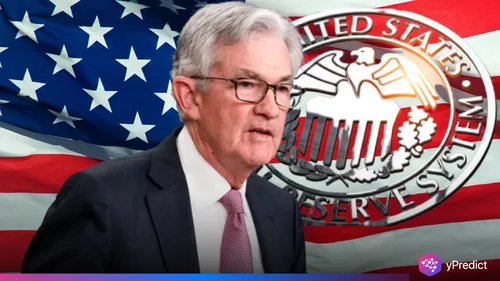
The USD/INR surged to nearly 85.90 on Wednesday as market sentiment shifted following upbeat US economic data. The JOLTS Job Openings report surprised investors with a strong reading, leading to weakness in the Indian rupee. US President Trump expressed optimism about a possible trade agreement with India. He made headlines with his comments before the tariff deadline on July 9.
His assurance that reduced tariffs would help level the playing field for American businesses supported broader trade expectations. Meanwhile, Fed Chair Jerome Powell emphasized a cautious approach to rate cuts. Additionally, as investors await important employment reports, it is strengthening support for the US dollar.
Trump’s Trade Optimism Fails to Support Indian Rupee
The Rupee did not receive much support from currency markets. However, Trump has publicly stated that a trade agreement with India is possible. The President’s remarks, aimed at signaling progress, failed to ease pressure on the Indian currency amid global headwinds.
Moreover, traders appeared skeptical that a diplomatic gesture alone could alleviate broader concerns about interest rates and inflation. Therefore, investor sentiment remained negatively impacted by the lack of a formal agreement as the July 9 deadline drew near. Therefore, until specific policy changes are confirmed, the Indian Rupee is likely to remain vulnerable.
Can Powell or Trump Shift Fed Direction?
Stronger-than-expected US JOLTS Job Openings data gave the US Dollar a fresh boost. May’s job openings rose to 7.769 million, above April’s 7.395 million. This data lifted the US Dollar Index to 96.90, its highest level in weeks.
Despite Trump’s comments, the market is cautious due to fiscal risks from his proposed tax and spending bill. Moody’s had already downgraded the US credit rating in May. A wider deficit could weaken long-term confidence in the US Dollar, despite current strength from labor metrics.
Investors are now awaiting the US ADP Employment Change data and June’s Nonfarm Payrolls (NFP). Expectations for a potential rate cut in September will be influenced by both releases. As a result, weak figures could reignite dovish bets and halt the USD/INR rally.
USD/INR Rebounds but Faces Chart Resistance
The USD/INR is still under bearish pressure despite its recovery to about 85.90. The price remained below a significant resistance level, the 20-day EMA, at 85.95. Furthermore, the 14-day RSI remained below 50, indicating limited momentum for further upside.
Support lies at 85.50, last seen on June 12. On the upside, 86.13 remains a tough barrier. Until NFP data provides clear direction, traders are likely to remain cautious with short-term positioning.
Policy Outlook Hinges on Economic Data
Fed Chair Jerome Powell reaffirmed that future data would be the basis for any interest rate decisions. Speaking in Portugal, he emphasized patience and the need to assess how policy changes affect inflation and jobs. As markets weigh Trump’s proposed trade deals and debt plans, the outlook for the Indian Rupee and US Dollar remains uncertain. Before the deadline on July 9, traders will keep a careful eye on labor reports and tariff developments to inform their strategies.
What Could Drive USD/INR Next?
As markets evaluate political and economic signals, the next few days may see new volatility. Despite his continued optimism about India, both economies could suffer if a trade agreement is not finalized. Meanwhile, any signs of labor market weakness in upcoming reports could cap US Dollar gains and offer relief to the Indian Rupee.
Additionally, investors will be watching for Fed officials’ remarks that could influence expectations for interest rates. Global risk sentiment and oil prices can also have an impact on the short-term movement of the USD/INR pair. What impact do you think the coming global events will have on the outlook for the USD/INR?







